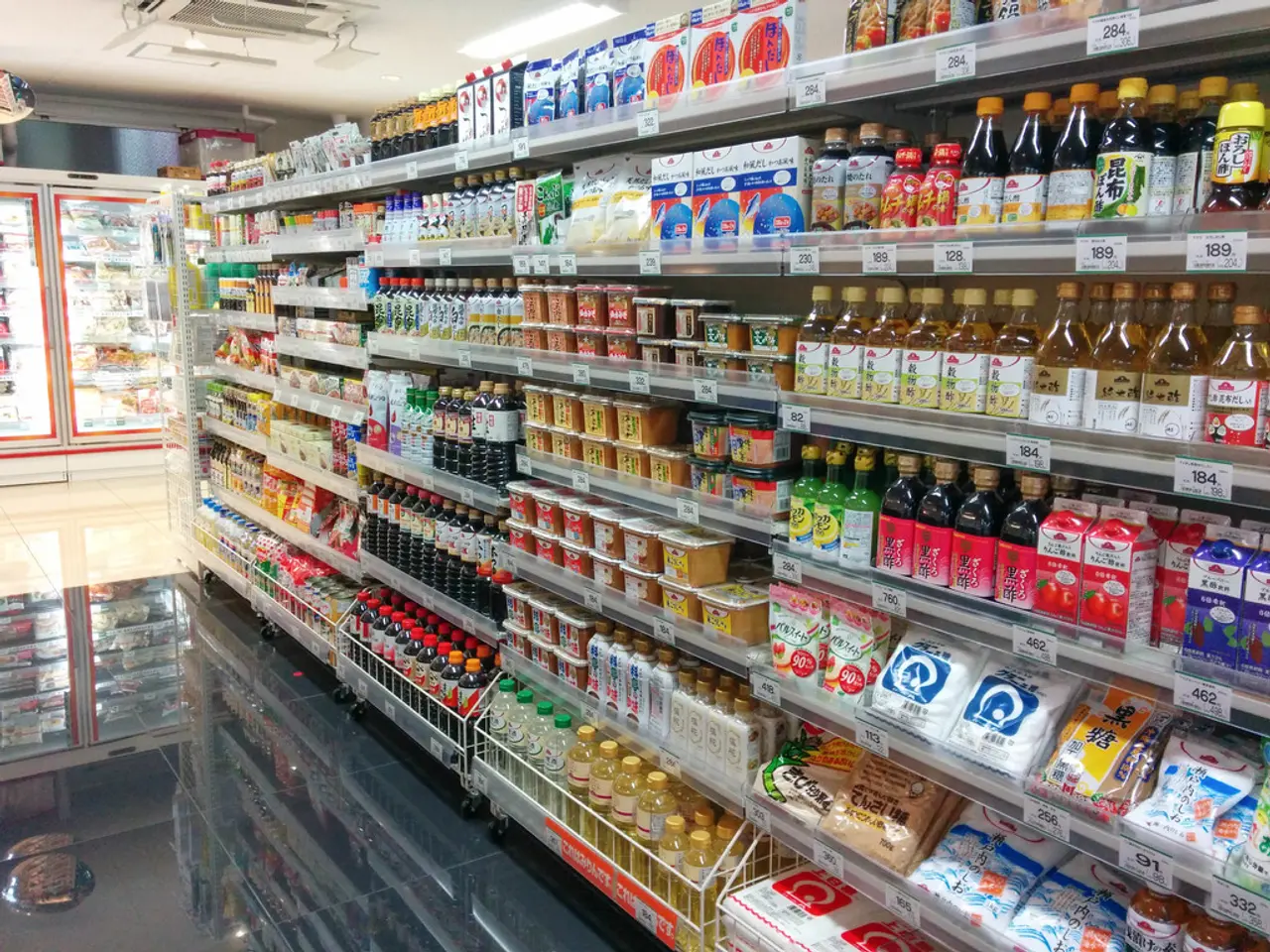Anticipated Challenges for India's Export of Goods in the Fiscal Year 2026, According to CRISIL
In a significant development, India is bracing for potential headwinds in its merchandise exports due to additional tariffs imposed by the US, as predicted by ratings firm CRISIL. The tariffs, expected to take effect from August 2025, could lead to a decline in export volumes and growth challenges across key sectors.
The looming tariffs, coupled with a global trade slowdown projected by the World Trade Organisation, threaten to dampen growth momentum in Indian goods exports in fiscal 2026. The WTO forecasts a 0.2% decline in the volume of merchandise trade in 2025 compared to a 2.9% increase in 2024.
Exporters in sectors such as engineering, plastics, pharmaceuticals, and seafood are already experiencing uncertainty, with orders being delayed or withheld due to unclear tariff structures. Many exporters have frontloaded shipments into June and July 2025, anticipating tariff hikes, but they expect a dip in exports starting August, with the worst impact forecasted for Q1 of fiscal 2026. This has also led to exporters reconsidering long-term investments.
Intense talks between India and the US over a bilateral trade agreement have yet to yield results, with disagreements—such as those over market access for American GM crops—adding uncertainty. This uncertainty causes buyers to withhold bulk orders until clarity emerges on the tariff rates that will apply on specific products.
The global economic slowdown, including slower growth in the US (India's largest export market), also compounds the external trade pressures facing India, further pressuring exports and requiring cautious optimism among Indian exporters and policymakers.
Despite these challenges, the current account deficit (CAD) is predicted to stay within the safe zone at 1.3% of the GDP in the current financial year. The robust flow of remittances and a surplus in services trade are expected to help manage the CAD. However, the overall merchandise trade is expected to face pressure amid these tariff challenges and slower global demand.
It is important to note that no specific details about the nature or extent of the tariffs or their potential impact on India's exports have been provided in the report. Additionally, the report does not mention any other countries or regions that may be affected by the tariffs or trade negotiations.
[1] World Trade Organisation Report, July 2025 [2] CRISIL Report, July 2025 [3] Business Standard, July 18, 2025
- The tariffs, as analyzed by CRISIL, have potential to disrupt India's business sectors like engineering, plastics, pharmaceuticals, and seafood, causing delays and withholding of orders due to unclear tariff structures.
- The global economic slowdown, particularly in the US, largest export market for India, combined with the looming tariffs, could potentially lead to a decline in export volumes and growth challenges across key sectors, as projected by WTO.
- Indian exporters, in anticipation of tariff hikes, have frontloaded shipments into June and July 2025 but are expecting a dip in exports starting August, with the worst impact forecasted for Q1 of fiscal 2026.
- Intense talks between India and the US over a bilateral trade agreement have yet to yield results, adding uncertainty and causing buyers to withhold bulk orders until clarity emerges on the tariff rates that will apply on specific products.
- Despite these potential challenges, it's predicted that the current account deficit will stay within the safe zone, with the robust flow of remittances and a surplus in services trade helping manage the deficit. However, overall merchandise trade may face pressure amid these tariff challenges and slower global demand.




